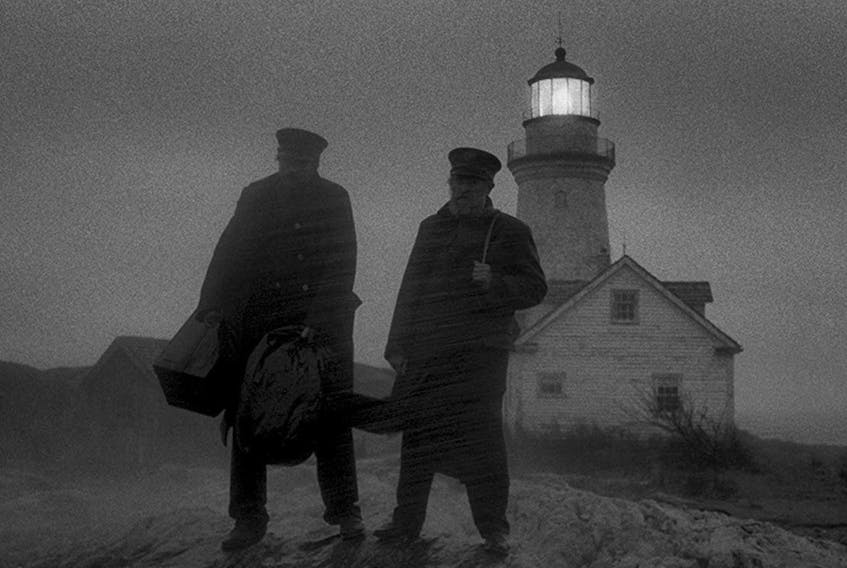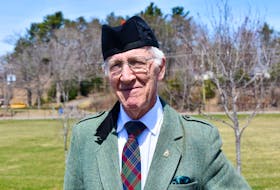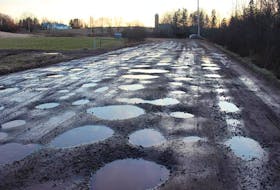Here’s my hunch: when most people sit down to watch The Lighthouse, which just happens to be the closing night gala at the Atlantic International Film Festival, they will be struck by the ominous bleakness of the opening scene.
They may even shiver involuntarily as the weather-worn dory approaches some desolate atoll, while the music rises like a funeral dirge in the background.
Yet, when I saw the scene Monday as part of a special press screening, I just went “well, there it is: home.”
I’m betting people reading these words will too.
There will be lots that looks familiar in The Lighthouse, which has been called “dazzling and dangerous” and “gripping and turbulent” by reviewers, as well as drawing favourable comparisons to writer-director Robert Eggers’ first feature, The Witch, the scariest movie I’ve seen this century.
The new movie, as you probably know, was shot in and around the Cape Forchu light, just south of Yarmouth, which sometimes graces Nova Scotia Department of Tourism promotional literature, but in cinematographer Jarin Blaschke’s “fierce monochrome” becomes something sinister and forbidding.
It’s the story of two light-keepers, or wickies, who occupy a nameless American light with a troubled history: the former assistant keeper seems to have gone spectacularly insane and disappeared mysteriously.
Now his ex-boss (Willem Dafoe channelling Captain Ahab) and his replacement — a moustachioed Robert Pattinson, who rarely speaks, but when he does uses a broad “Paak the caa in Havaad Yadd” Massachusetts accent — are starting a five-week stay.
The pair have complicated back-stories. Their relationship is troubled from the start: the head-tender is a tyrant, his underling a brooder. From the opening scene, suspicion and paranoia builds.
What is more, bad spirits seem to abound in this unsettling place. The gulls, said to harbour the souls of those lost at sea, are malevolent. The talismanic carving of a mermaid seems to have the power to drive the underling to what his boss derisively calls “self-abuse.”
The setting is no mere backdrop for the story. The island, with its lunar landscape and perpetual mud and damp would be enough to drive the Dalai Lama to despair.

The unrelenting weather, which will look familiar in the wake of hurricane Dorian, keeps the pair prisoner. The lighthouse, our lighthouse, is like something alive.
What I mean to say is that we can take some hometown pride in the Gothic Maritime feel of this film which critics have noted and audiences are certain to respond to.
Not, mind you, in a warm and fuzzy way. Nothing good happens on that island.
Something mightily fouls their well water. They eat gruel cooked up by the head wickie, and, since they work shifts opposite to each other, spend their time together gooned on a white-lightning that engenders what little comradeship they feel for each other.
That, alas, is short-lived. What we mostly see is their disintegration, seemingly caused by a myriad of factors: those nasty unnamed external forces; physical isolation; their own tattered psyches, particularly on the part of the underling, who is haunted by the past and bedevilled by the present.
The movie is powerful and frightening and is bound to cause a stir.
I’ve never in my life written what can even generously be called a film review. But I couldn’t keep my eyes off of the performance by Dafoe, who is known to have a special affinity for Nova Scotia.
Pattinson, who was on screen for almost the whole movie, was damn good too.
All told only four people were listed in the acting credits, one of them being long-time local television location scout and sometimes actor Shaun Clarke, who played one of the tenders that Dafoe and Pattinson replaced at the very start of the movie.
I think they could, in this case, have stretched the definition a bit. A piece of geography isn’t an actor of course. But in this case the setting — stark, unforgiving and close to the elements — almost seems to come alive on film.
Is anyone really surprised?
RELATED:









